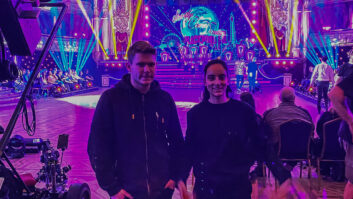
Delegates to IBC’s Big Screen keynote ‘Extending The Creative Palette’ were urged to think of High Dynamic Range (HDR) as an equally important experience as the introduction of colour 80 years ago.
“It’s hard to believe unless you experience it,” said Dominic Glynn, Pixar’s senior scientist. “HDR enables filmmakers to deliver a version of the film as originally conceived butwhich they were unable to do before. We can show the audience colours they’venever seen before as a resultof mixing the RGB primaries in the laser projectors.”
To illustrate this creative impact, Glynn presented clips from Inside Out, the first feature released in the Dolby Cinema HDR format. The two worlds of the film – outside the mind and inside the mind of the protagonist – were rendered more distinctive by using luminance of 48 nits (the current exhibition light standard) and 62 nits, respectively, even pushing up to 108 nits for certain effects.
“We exploited black reproductions to get to a velvet painting idea, as if the world were lit by fluorescent and ultra violet light,” said Glynn.
The first live action film to be mastered with an HDR and rec.2020 finish is Tomorrowland, a post production collaboration between ILM and Pixar (both Walt Disney companies). “We began by drawing up a schema of what happens to a single pixel as it is acquired on set through dailies and into the post pipeline,” explained Jeroen Schulte, Image Pipeline lead, ILM.
“With this new canvas you can see a sparkle in the actor’s eyes that you have literally never seen before,” said Rick Sayre, Pixar supervising technical director.







